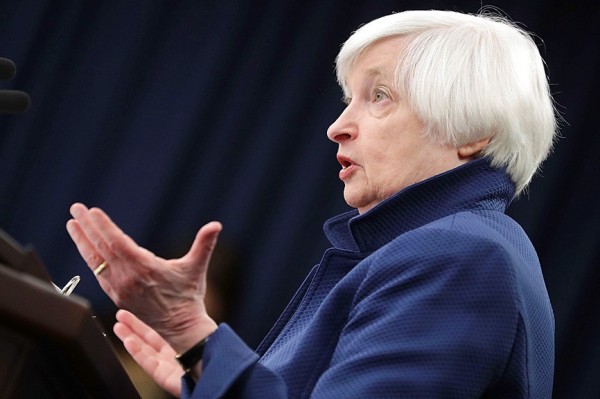《TAIPEI TIMES 焦點》 US Fed rate moves could spell the end of easing in Asia

US Federal Reserve Chairwoman Janet Yellen speaks at a news conference in Washington on Wednesday. Photo: AFP
/ Reuters, SINGAPORE
The long cycle of falling interest rates in Asia could be over after the US Federal Reserve’s third rate increase in 15 months was followed quickly by monetary tightening in the world’s second-biggest economy, China.
The Fed’s widely anticipated rise of 25 basis points on Wednesday was also only its third since the global financial crisis, having reined in earlier temptations to raise rates out of concern for the effect on fragile emerging economies that still needed looser monetary conditions.
However, the Fed again signaled that such reticence is over, repeating its projections for at least two more rate increases this year as the US economy improves.
“At the very least, the Fed’s desire to step up the pace of policy normalization has changed the conversation at many central banks globally,” said Sean Callow, an economist with Westpac in Sydney.
“Further monetary easing is now largely seen as only if needed to ‘break the glass,’ not a plausible baseline,” Callow said.
The People’s Bank of China yesterday raised the rates on the short-term funding operations it conducts for the nation’s banks for a third time this year.
The Fed’s move would otherwise make it harder for China to stop its currency weakening and arrest a persistent outflow of capital. China also wants to cool a run-up in debt and the risk of a property bubble.
The Bank of Japan’s regular policy meeting yesterday opted to stand pat with its 0.1 percent short-term interest rate target and a loose commitment to keep buying bonds, though core inflation is far below its ambitious 2 percent target.
The Fed’s new policy path is a sea change for global markets used to a decade of easy money.
While emerging markets are showing some signs of strength, with a recovery in commodity prices and growth in exports, they are struggling to fire up domestic demand.
However, their freedom to fit domestic rates to local demand conditions is constrained by the need to keep hold of the foreign capital that flooded in seeking higher yields when developed world rates were at rock bottom.
They also need to prevent their currencies from tumbling against a rallying US dollar.
新聞來源:TAIPEI TIMES














